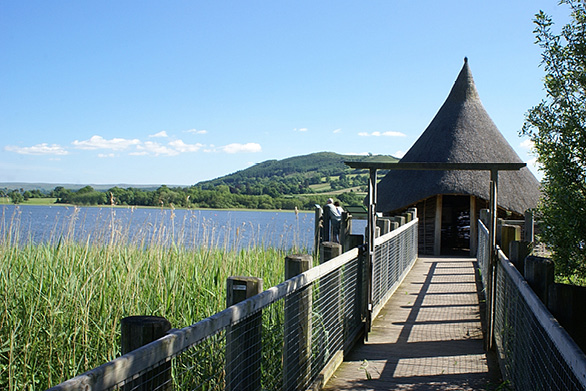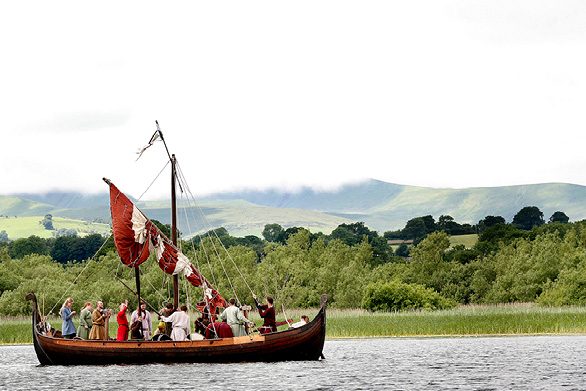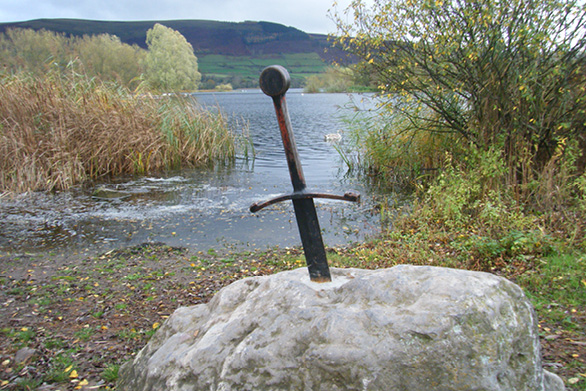History, archaeology & Llangors Crannόg
A man-made island called a crannόg is located in the lake. These ‘crannόgs’ were usually stockaded. It is said that in AD 916 Aethelflaed, Saxon queen of Mercia, daughter of King Alfred of Wessex (849-899), and widow of Ethelred, sent her army into Wales, to destroy the royal residence known as Brycheiniog and capture its inhabitants. Brycheiniog was the crannόg in Llangors Lake.
At the time, Aethelflaed was busily amassing property in Northumberland and Wales while her brother Edward was conquering the Danish rulers of England. Eventually, Edward would hold nearly all of what is now Great Britain.


According to historical sources, Brycheinog was a royal residence for Welsh kings claiming descent from Brychan, son of an Irish father and a Welsh mother. The island was built ca. 889-893 by piling stones and earth on top of brushwood, reeds, lenses of sand, and peat. A palisade of oak planks was set around the edge and a stone causeway led to the north shore of the Lake.
Modern excavations at crannόg were undertaken by a joint team from the University of Wales and the National Museum of Wales. The excavations detailed construction methods and identified personal decorative items such as brooches, bone combs and rings of shale and glass, fragments of fabric and plenty of charcoal, attesting to the eventual destruction of the buildings.
The site has suffered from erosion and tourist traffic; recent excavations by the National Museum of Wales at the site promise to bring further information about this interesting site, one of the few Dark Age sites in Wales that can be directly connected to a historical event, the site’s sacking by Aethelflaed.
Sources:
Alan Lane and Mark Redknap. 2001. Llangors Crannóg. Pp. 205-207 in Pam Crabtree (ed.), Medieval Archaeology: An Encyclopedia. Garland Publishing, New York.
Redknap, Mark and Alan Lane. 1994. The Early Medieval crannóg at Llangors, Powys: an interim statement on the 1989-1993 seasons. The International Journal of Nautical Archaeology 23(3):189-205.

